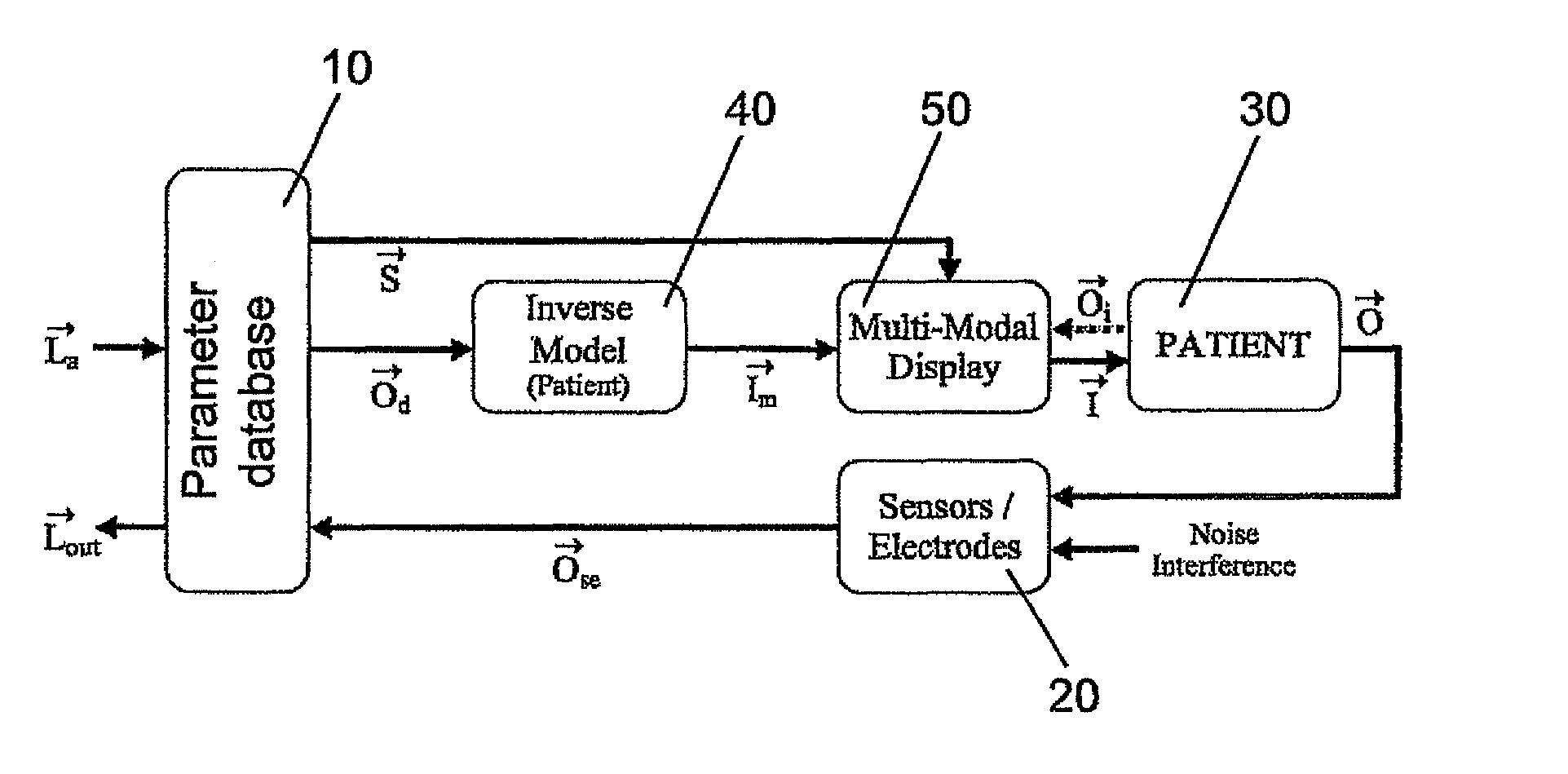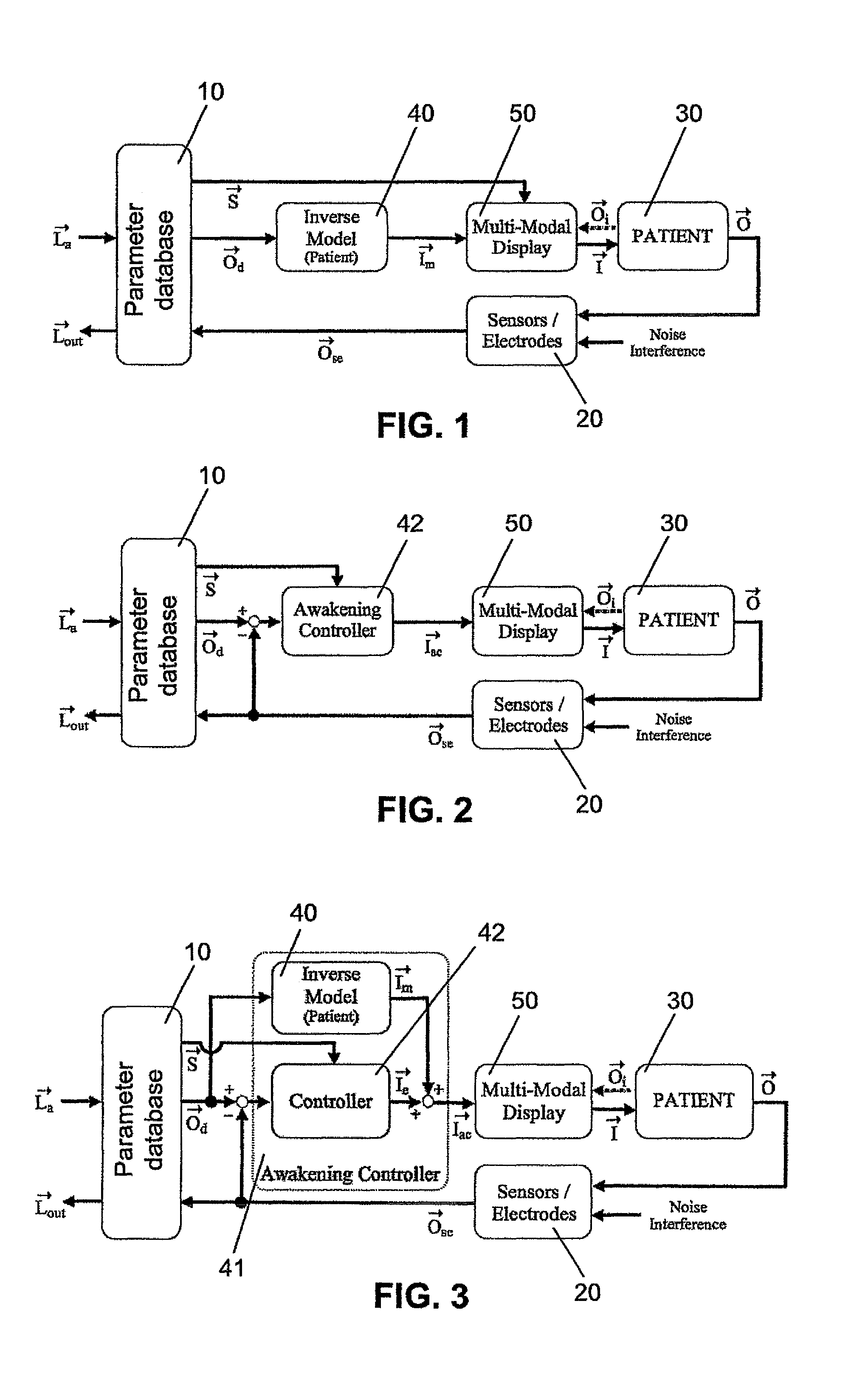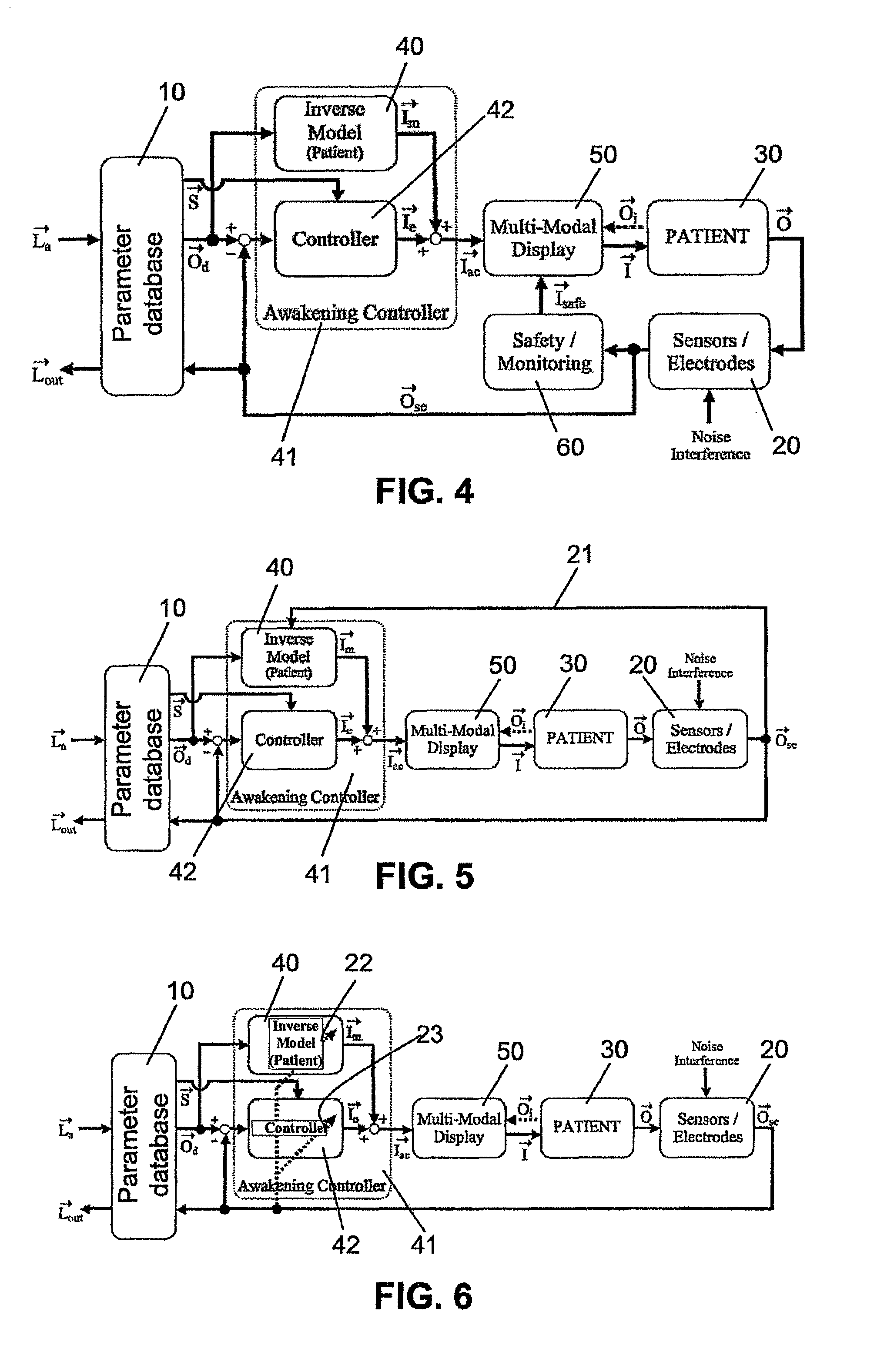Rehabilitation system for neurological disorders
a neurological disorder and rehabilitation system technology, applied in the field of rehabilitation systems for neurological disorders, can solve the problems that the system is not suitable for patients in a vegetative state or minimal conscious state, and achieve the effect of improving the alertness and awareness of such patients
- Summary
- Abstract
- Description
- Claims
- Application Information
AI Technical Summary
Benefits of technology
Problems solved by technology
Method used
Image
Examples
first embodiment
[0030]FIG. 1 shows a rehabilitation device according to the invention using an open-loop / feedforward control.
[0031]The rehabilitation device comprises a interpreter computer unit 10 named parameter database in FIG. 1. This unit 10 comprises input and output facilities. The arrow {right arrow over (L)}a relates to a vector called ‘level of alertness’ which is to be defined as a set of parameters. The same set of parameters describes the ‘actual level of alertness’ {right arrow over (L)}out, i.e. comprising the same vector elements. These elements are physiological quantities. Such physiological quantities can be chosen from the group encompassing e.g. EEG signals and Evoked Potentials, EMG signals, heart rate, systolic and diastolic blood pressure, respiration frequency, skin conductance, oxygen saturation, body temperature, etc.
[0032]These physiological quantities are measurement signals which can be acquired through sensors 20, which are applied to a patient 30. Additionally, of co...
second embodiment
[0039]FIG. 2 shows a rehabilitation device according to the invention using a feedback control. The system uses identical units 10, 20, 30, 40 and 50. The inverse model of the patient of FIG. 1 is adapted to become the so called awakening controller 42. In the feedback loop recorded signals {right arrow over (O)}se will be compared to the reference values {right arrow over (O)}d and the error fed into the (awakening) controller 42. The controller 42 then determines the required input signals {right arrow over (I)}ac inducted to the display devices 50.
third embodiment
[0040]FIG. 3 shows a rehabilitation device according to the invention using a combination of feedforward and feedback control. Therefore the awakening controller unit 41 comprises beside the inverse model 40 the controller 42 from FIG. 2. The predicted error vector {right arrow over (I)}e is calculated by controller 42 which receives the input signals as in FIG. 2.
[0041]Additional to the separated control strategies as mentioned in connection with FIG. 1 and FIG. 2 the predicted error vector {right arrow over (I)}e and the output {right arrow over (I)}m of the inverse human model 41 will sum up and define the input {right arrow over (I)}ac to the multi-modal display 50. The display 50 will expose the patient to the defined sensory modalities {right arrow over (I)}.
PUM
 Login to View More
Login to View More Abstract
Description
Claims
Application Information
 Login to View More
Login to View More - R&D
- Intellectual Property
- Life Sciences
- Materials
- Tech Scout
- Unparalleled Data Quality
- Higher Quality Content
- 60% Fewer Hallucinations
Browse by: Latest US Patents, China's latest patents, Technical Efficacy Thesaurus, Application Domain, Technology Topic, Popular Technical Reports.
© 2025 PatSnap. All rights reserved.Legal|Privacy policy|Modern Slavery Act Transparency Statement|Sitemap|About US| Contact US: help@patsnap.com



